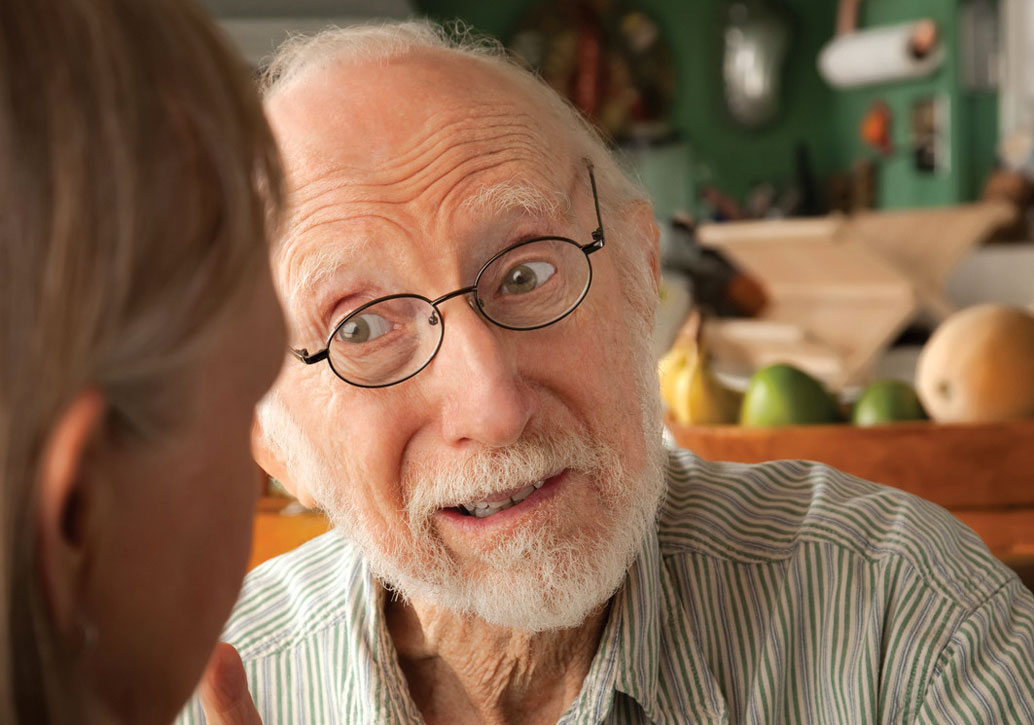By Anne Katz
In the terminal stages of the cancer trajectory, sexuality is often regarded as not important by health care providers. The need or ability to participate in sexual activity may wane in the terminal stages of illness, but the need for touch, intimacy, and how one views oneself don’t necessarily wane in tandem. Individuals may in fact suffer from the absence of loving and intimate touch in the final months, weeks, or days of life.
It is often assumed that when life nears its end, individuals and couples are not concerned about sexual issues and so this is not talked about. This attitude is borne out by the paucity of information about this topic.
Communicating about sexuality with the terminally ill
Attitudes of health care professionals may act as a barrier to the discussion and assessment of sexuality at the end of life.
• We bring to our practice a set of attitudes, beliefs and knowledge that we assume applies equally to our patients.
• We may also be uncomfortable with talking about sexuality with patients or with the idea that very ill patients and/or their partners may have sexual needs at this time.
• Our experience during our training and practice may lead us to believe that patients at the end of life are not interested in what we commonly perceive as sexual. How often do we see a patient and their partner in bed together or in an intimate embrace?
• We may never have seen this because the circumstances of hospitals and even hospice may be such that privacy for the couple can never be assured and so couples do not attempt to lie together.
 For the patient who remains at home during the final stages of illness the scenario is not that different. Often the patient is moved to a central location, such as a family or living room in the house and no longer has privacy.
For the patient who remains at home during the final stages of illness the scenario is not that different. Often the patient is moved to a central location, such as a family or living room in the house and no longer has privacy.
• While this may be more convenient for providing care, it precludes the expression of sexuality, as the patient is always in view.
• Professional and volunteer helpers are frequently in the house and there may never be a time when the patient is alone or alone with his/her partner, and so is not afforded an opportunity for sexual expression.
• Health care providers may not ever talk about sexual functioning at the end of life, assuming that this does not matter at this stage of the illness trajectory.
• This sends a very clear message to the patient and his/her partner that this is something that is either taboo or of no importance. This in turn makes it more difficult for the patient and/or partner to ask questions or bring up the topic if they think that the subject is not to be talked about.
Sexual functioning at the end-of-life
Factors affecting sexual functioning at the end of life are essentially the same as those affecting the individual with cancer at any stage of the disease trajectory. These include:
• Psychosocial issues such as change in roles, changes in body-and self-image, depression, anxiety, and poor communication.
• Side effects of treatment may also alter sexual functioning; fatigue, nausea, pain, edema and scarring all play a role in how the patient feels and sees him/herself and how the partner views the patient.
• Fear of pain may be a major factor in the cessation of sexual activity; the partner may be equally fearful of hurting the patient.
The needs of the couple
Couples may find that in the final stages of illness, emotional connection to the loved one becomes an important part of sexual expression. Verbal communication and physical touching that is non-genital may take the place of previous sexual activity.
• Many people note that the cessation of sexual activity is one of the many losses that result from the illness, and this has a negative impact on quality of life.
• Some partners may find it difficult to be sexual when they have taken on much of the day-to-day care of the patient and see their role as caregiver rather than lover.
• The physical and emotional toll of providing care may be exhausting and may impact on the desire for sexual contact.
• In addition, some partners find that as the end nears for the ill partner, they need to begin to distance themselves.
Part of this may be to avoid intimate touch. This is not wrong but can make the partner feel guilty and more liable to avoid physical interactions.
Addressing sexual needs
Couples may need to be given permission to touch each other at this stage of the illness and health care providers may need to consciously address the physical and attitudinal barriers that prevent this from happening.
• Privacy issues need to be dealt with. This includes encouraging patients to close their door when private time is desired and having all levels of staff respect this. A sign on the door indicating that the patient is not to be disturbed should be enough to prevent staff from walking in and all staff and visitors should abide by this.
• Partners should be given explicit permission to lie with the patient in the bed. In an ideal world, double beds could be provided but there are obvious challenges to this in terms of moving beds into and out of rooms, and challenges also for staff who may need to move or turn patients. Kissing, stroking, massaging, and holding the patient is unlikely to cause physical harm and may actually facilitate relaxation and decrease pain.
• The partner may also be encouraged to participate in the routine care of the patient. Assisting in bathing and applying body lotion may be a non-threatening way of encouraging touch when there is fear of hurting the patient.
Specific strategies for couples who want to continue their usual sexual activities can be suggested depending on what physical or emotional barriers exist. Giving a patient permission to think about their self as sexual in the face of terminal illness is the first step. Offering the patient/couple the opportunity to discuss sexual concerns or needs validates their feelings and may normalize their experience, which in itself may bring comfort. More specific strategies for symptoms include these suggestions.
• Timing of analgesia may need to be altered to maximize pain relief and avoid sedation when the couple wants to be sexual. Narcotics, however, can interfere with arousal which may be counterproductive.
• Fatigue is a common experience in the end stages of cancer and couples/individuals can be encouraged to set realistic goals for what is possible, and to try to use the time of day when they are most rested to be sexual either alone or with their partner.
•Using a bronchodilator or inhaler before sexual activity may be helpful for patients who are short of breath. Using additional pillows or wedges will allow the patient to be more upright and make breathing easier.
• Couples may find information about alternative positions for sexual activity useful.
• Incontinence or the presence of an indwelling catheter may represent a loss of control and dignity and may be seen as an insurmountable barrier to genital touching.
It is important to emphasize that there is no right or wrong way of being sexual in the face of terminal illness; whatever the couple or individual chooses to do is appropriate and right for them. It is also not uncommon for couples to find that impending death draws them much closer and they are able to express themselves in ways that they had not for many years.
Anne Katz, PhD, RN, FAAN, certified Sexuality Counselor at CancerCare Manitoba and Clinical Nurse Specialist at the Manitoba Prostate Centre, counsels patients with a history of cancer who are experiencing sexual and relationship challenges.
Reprinted from Canadian Virtual Hospice.













